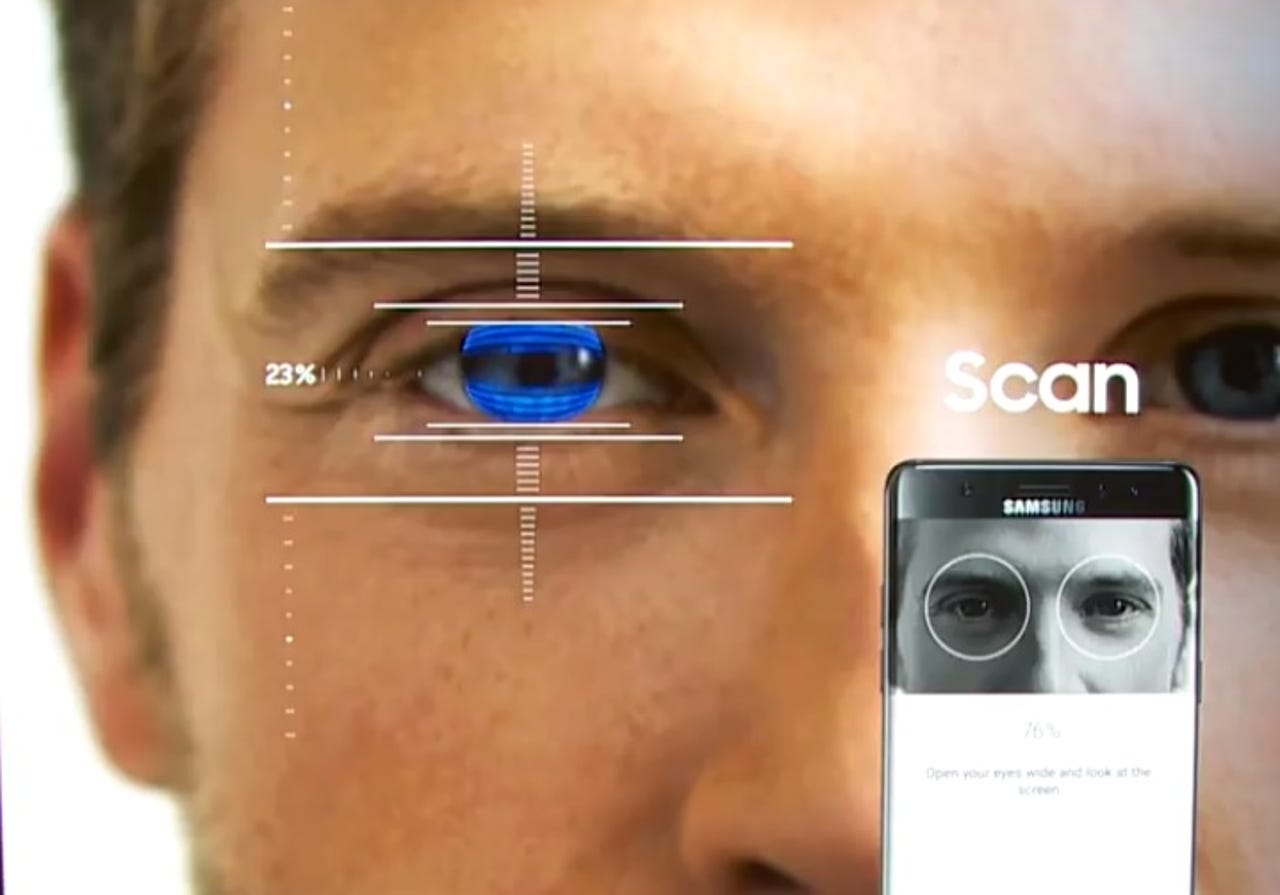Samsung's Galaxy Note 7 aims to take iris scanning security mainstream


Samsung is betting that iris scanning combined with its Samsung Pass technology can replace passwords.
Samsung launched its Galaxy Note 7 and placed a big bet that it can make iris scanning technology mainstream enough to secure a device, files, and ultimately authenticate payments, apps, and services.
With the move, Samsung brings another layer of security to go along with fingerprints, PINs, and passwords. Samsung doesn't see iris scanning as the go-to authentication tool as much as a supplement that'll secure folders and key documents within Knox, the company's secure container system.
More: Samsung debuts Galaxy Note 7 | CNET hands-on: Like an S7 Edge with a stylus | Why Samsung's business device faces high stakes | Samsung continues leading the smartphone market
The iris scanning technology was developed over five years and runs on Samsung's proprietary algorithm to verify identity. Samsung is also betting that iris scanning combined with its Samsung Pass technology can replace passwords. Initial partners are Bank of America, Citi, and US Bank.
In its release, Samsung noted:
The Galaxy Note 7 offers more authentication options that can be used interchangeably depending on how people use their phones, wherever they are, or whatever they are doing.
For an enterprise, the iris scanning technology is notable because it could better secure sensitive data. A spreadsheet reserved for the CFO could be aligned to his eyes only -- literally.
Patrick Moorhead, principal of Moor Insights and Strategy, said:
The iris scanner gives users more choice in biometric logins with both fingerprint and now iris, and when added to Knox Workspaces, both iris and passwords can be used for the same application or data file. Generally speaking, Iris can be more secure than fingerprint because there are more points to check than fingerprint and irises don't change after the first 18 months of life, but researchers will need to test this specific Note 7 implementation to validate this. It's very important for Samsung to share that research as soon as they can so IT shops know which method (iris or fingerprint) to choose.
Samsung's approach to iris scanning is similar to its other innovations. At first, you think it's a bit ahead of its time. But eventually the technology takes root.
Galaxy Note 7: First views of Galaxy's new phablet
DJ Koh, president of Samsung's mobile communications business, was sure to note that most folks scoffed at the Galaxy Note when it launched. In fact, most folks scoffed at the phablet category. Koh said that iris scanning can become the norm.
The catch is the set-up. CNET's Jessica Dolcourt noted that the iris scanning set-up is intuitive. She said:
You can unlock the phone with your fingerprint, or you can use your eyes (one set of eyeballs). Setup is intuitive. Unlocking is easy and fast; you hold the phone up to your face and the software does the rest. (Microsoft's Lumia 950 has a version of this, too.)
The funny thing is, Samsung doesn't actually expect you to scan your peepers every time you want to unlock the phone, the company told me in my briefing. Instead, iris scans are seen as supplemental, like to get you into the new, secured Private Folder where you can store things such as a photo of your passport, banking information or apps you don't want the kids to use.
What's unclear is whether the iris scanning technology can be gamed. It's also unclear how the technology will scale in the field.
The bottom line is that a little more biometric authentication and security can't hurt. Enterprises are likely to be interested in how the iris scanning layer plays out over time.